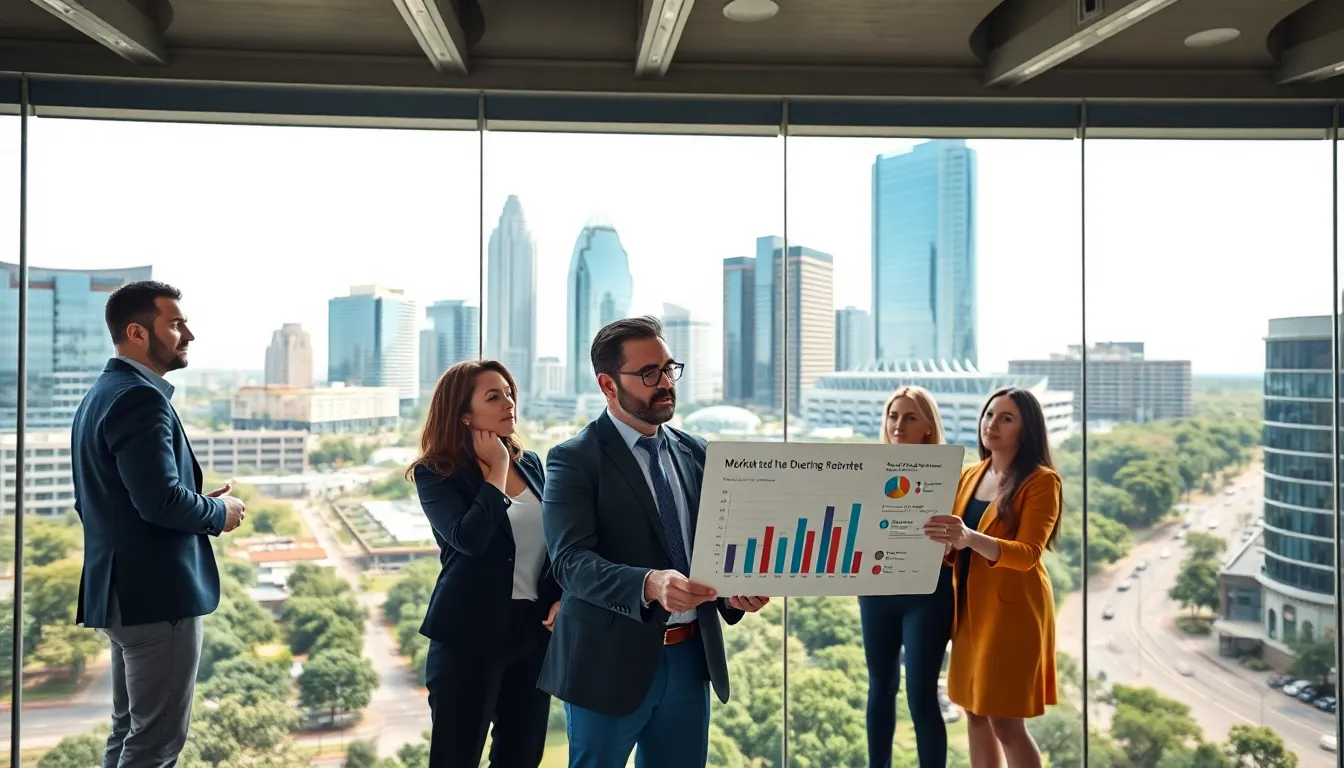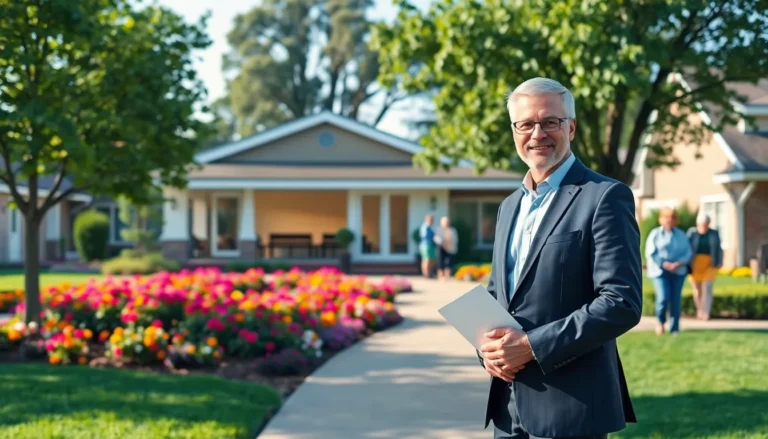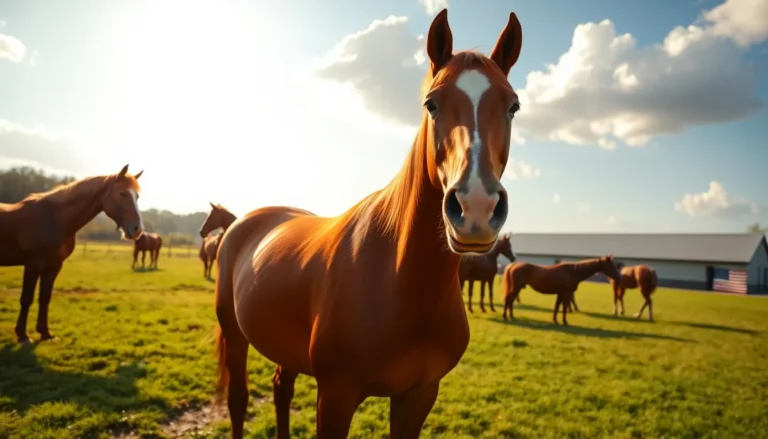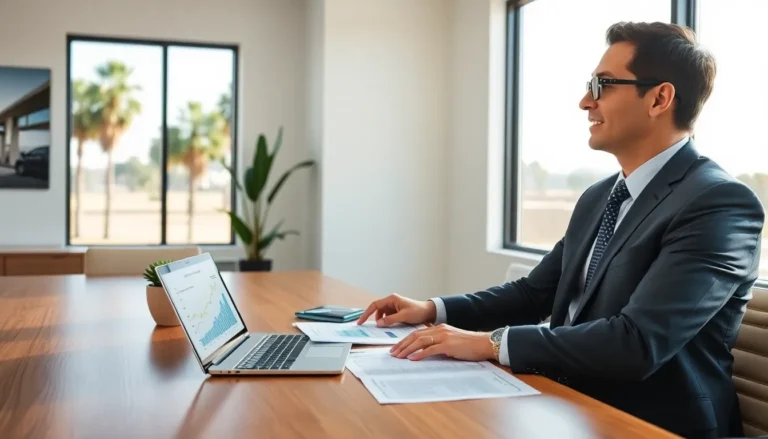When it comes to real estate, Austin has become the hottest commodity in Texas, and for good reason. Picture vibrant music scenes, delicious Tex-Mex, and a climate that even your sun-loving aunt would envy. But what does this mean for homebuyers and investors? Understanding Austin’s real estate trends could be your ticket to finding the perfect property or snapping up a lucrative investment. With market conditions shifting faster than you can say ‘Keep Austin Weird,’ let’s jump into the specifics so you won’t miss out. Trust me, you’ll want to stick around for these insights.
Table of Contents
ToggleOverview of Austin’s Real Estate Market

Austin’s real estate market has transformed significantly over the past decade. Once a quaint college town, it’s now a bustling metropolis drawing transplants from coast to coast. The demand for housing continues to grow, influenced by a combination of factors like population growth, job opportunities, and lifestyle preferences.
As of 2025, the average home price in Austin has surged to approximately $600,000, reflecting a rise of nearly 15% from the previous year. Rentals are also on the rise, with average monthly rent reaching upwards of $2,500 for a two-bedroom apartment in some desirable neighborhoods. The current landscape suggests a highly competitive environment for buyers and renters alike, leading to bidding wars and homes selling within days of listing.
Current Market Conditions and Statistics
The current conditions of Austin’s real estate market can best be described as a whirlwind. Buyers are facing a tight inventory that has plummeted by about 20% year-over-year, drastically limiting options. This scarcity has driven up not just home prices but also the intensity of offers. You might think you’re just browsing, but before you know it, you’re taking part in a truncated dining-room-table negotiation.
Statistics indicate that homes listed in Austin are frequently drawing multiple offers, often exceeding asking price by 10% or more. The average time a listing stays on the market is now less than two weeks, a testament to the frantic pace at which the market is operating. In such a scenario, if you snooze, you could very well lose. Investors, first-time buyers, and those looking for upgrades will need to be strategic and prepared to act fast.
Key Factors Driving Real Estate Trends
Several factors are playing a vital role in steering Austin’s real estate trends. First and foremost, its thriving job market, particularly in tech and healthcare, attracts a steady influx of new residents. The presence of major companies such as Tesla and Oracle has further fueled this trend, making the city a magnet for high-earning professionals.
Also, the lifestyle options available in Austin contribute to its popularity. With an unrivaled music scene, endless outdoor activities, and a general vibe that screams community, it’s no wonder people want to settle down here. Add to that the relatively lower cost of living compared to other tech hubs like San Francisco, and you have a recipe for increased migration.
Neighborhood Spotlights: Hot Areas in Austin
Not all neighborhoods in Austin are created equal, and some are certainly basking in the spotlight more than others. West Austin boasts luxury homes and access to picturesque hill country views, making it a hit among affluent buyers. But, don’t overlook East Austin, a hotspot for hipster culture and also new developments, which is drawing young professionals and artists at a rapid pace.
Areas such as South Congress (SoCo) and Mueller are also making waves. In SoCo, eclectic boutiques and artisanal coffee shops pepper the landscape, while Mueller offers a mix of commercial and residential spaces, ideal for families looking for great schools.
Impact of Economic Developments on Real Estate
Economic developments significantly influence real estate trends in Austin, and the effects are palpable. The arrival of major corporations has not only created a plethora of job opportunities but has also led to a surge in real estate development. New commercial properties and housing complexes are being constructed to cater to the growing workforce.
Conversely, this boom comes with challenges, such as gentrification, which has changed the dynamics in historically diverse neighborhoods. Local authorities are now grappling with how to improve infrastructure while maintaining the character of these areas, a tight rope that is crucial for future developments.
Sustainability and Future Trends in Housing
As Austin pushes toward a more sustainable future, anti-sprawl initiatives and eco-friendly housing are becoming more prevalent. The demand for smart homes equipped with energy-efficient technologies is on the rise, appealing to eco-conscious buyers. Sustainable practices, from solar panels to rainwater harvesting, are becoming selling points for new homes.
Community-driven approaches aim to blend urban living with nature, promising developments that prioritize green spaces and walkability. Given the fast pace of change, it seems clear that those investing in Austin real estate today are not just buying properties: they’re buying into a vision for a more sustainable future.







